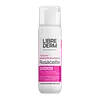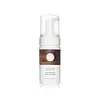What's inside
What's inside
 Key Ingredients
Key Ingredients

No key ingredients
 Benefits
Benefits

 Concerns
Concerns

 Ingredients Side-by-side
Ingredients Side-by-side

Water
Skin ConditioningCocamidopropyl Betaine
CleansingGlycerin
HumectantSodium Cocoamphoacetate
CleansingHydroxyethyl Urea
HumectantSodium Cocoyl Glutamate
CleansingSodium Cocoyl Apple Amino Acids
Skin ConditioningSodium PCA
HumectantPolyglyceryl-6 Caprylate
EmulsifyingPolyglyceryl-3 Cocoate
EmulsifyingAllantoin
Skin ConditioningPolyglyceryl-4 Caprate
EmulsifyingCitric Acid
BufferingPolyglyceryl-6 Ricinoleate
EmulsifyingParfum
MaskingChlorphenesin
AntimicrobialMagnesium Nitrate
Methylchloroisothiazolinone
PreservativeMagnesium Chloride
Methylisothiazolinone
PreservativeButylene Glycol
HumectantVincetoxicum Atratum Root Extract
EmollientCornus Officinalis Fruit Extract
Skin ConditioningDimethyl Sulfone
SolventDipotassium Glycyrrhizate
HumectantTetrasodium EDTA
Water, Cocamidopropyl Betaine, Glycerin, Sodium Cocoamphoacetate, Hydroxyethyl Urea, Sodium Cocoyl Glutamate, Sodium Cocoyl Apple Amino Acids, Sodium PCA, Polyglyceryl-6 Caprylate, Polyglyceryl-3 Cocoate, Allantoin, Polyglyceryl-4 Caprate, Citric Acid, Polyglyceryl-6 Ricinoleate, Parfum, Chlorphenesin, Magnesium Nitrate, Methylchloroisothiazolinone, Magnesium Chloride, Methylisothiazolinone, Butylene Glycol, Vincetoxicum Atratum Root Extract, Cornus Officinalis Fruit Extract, Dimethyl Sulfone, Dipotassium Glycyrrhizate, Tetrasodium EDTA
Water
Skin ConditioningGlycerin
HumectantPropylene Glycol
HumectantTea-Cocoyl Alaninate
CleansingTrehalose
HumectantCocamidopropyl Betaine
CleansingSodium Lauroyl Sarcosinate
CleansingButylene Glycol
HumectantDisodium Cocoyl Glutamate
CleansingPanthenol
Skin ConditioningSodium Cocoyl Glutamate
CleansingChlorphenesin
AntimicrobialOryza Sativa Extract
AbsorbentPhenoxyethanol
PreservativeOryza Sativa Bran Extract
Skin ConditioningO-Cymen-5-Ol
AntimicrobialIngredients Explained
These ingredients are found in both products.
Ingredients higher up in an ingredient list are typically present in a larger amount.
Butylene Glycol (or BG) is used within cosmetic products for a few different reasons:
Overall, Butylene Glycol is a safe and well-rounded ingredient that works well with other ingredients.
Though this ingredient works well with most skin types, some people with sensitive skin may experience a reaction such as allergic rashes, closed comedones, or itchiness.
Learn more about Butylene GlycolChlorphenesin is a synthetic preservative. It helps protect a product against bacteria in order to extend shelf life. In most cases, Chlorphenesin is paired with other preservatives such as phenoxyethanol and caprylyl glycol.
Chlorphenesin is a biocide. This means it is able to help fight the microorganisms on our skin. It is also able to fight odor-releasing bacteria.
Chlorphenesin is soluble in both water and glycerin.
Studies show Chlorphenesin is easily absorbed by our skin. You should speak with a skincare professional if you have concerns about using Chlorphenesin.
Learn more about ChlorphenesinCocamidopropyl Betaine is a fatty acid created by mixing similar compounds in coconut oil and dimethylaminopropylamine, a compound with two amino groups.
This ingredient is a surfactant and cleanser. It helps gather the dirt, pollutants, and other impurities in your skin to be washed away. It also helps thicken a product and make the texture more creamy.
Being created from coconut oil means Cocamidopropyl Betaine is hydrating for the skin.
While Cocamidopropyl Betaine was believed to be an allergen, a study from 2012 disproved this. It found two compounds in unpure Cocamidopropyl Betaine to be the irritants: aminoamide and 3-dimethylaminopropylamine. High-grade and pure Cocamidopropyl Betaine did not induce allergic reactions during this study.
Learn more about Cocamidopropyl BetaineGlycerin is already naturally found in your skin. It helps moisturize and protect your skin.
A study from 2016 found glycerin to be more effective as a humectant than AHAs and hyaluronic acid.
As a humectant, it helps the skin stay hydrated by pulling moisture to your skin. The low molecular weight of glycerin allows it to pull moisture into the deeper layers of your skin.
Hydrated skin improves your skin barrier; Your skin barrier helps protect against irritants and bacteria.
Glycerin has also been found to have antimicrobial and antiviral properties. Due to these properties, glycerin is often used in wound and burn treatments.
In cosmetics, glycerin is usually derived from plants such as soybean or palm. However, it can also be sourced from animals, such as tallow or animal fat.
This ingredient is organic, colorless, odorless, and non-toxic.
Glycerin is the name for this ingredient in American English. British English uses Glycerol/Glycerine.
Learn more about GlycerinSodium Cocoyl Glutamate is a gentle cleanser and surfactant. It is the sodium salt of the Cocoyl Glutamic Acid and comes from coconut oil. As a surfactant, it helps lift dirt and oil to be washed away.
Sodium Cocoyl Glutamate also has an emolliating effect and can help leave the skin feeling soft.
Water. It's the most common cosmetic ingredient of all. You'll usually see it at the top of ingredient lists, meaning that it makes up the largest part of the product.
So why is it so popular? Water most often acts as a solvent - this means that it helps dissolve other ingredients into the formulation.
You'll also recognize water as that liquid we all need to stay alive. If you see this, drink a glass of water. Stay hydrated!
Learn more about Water